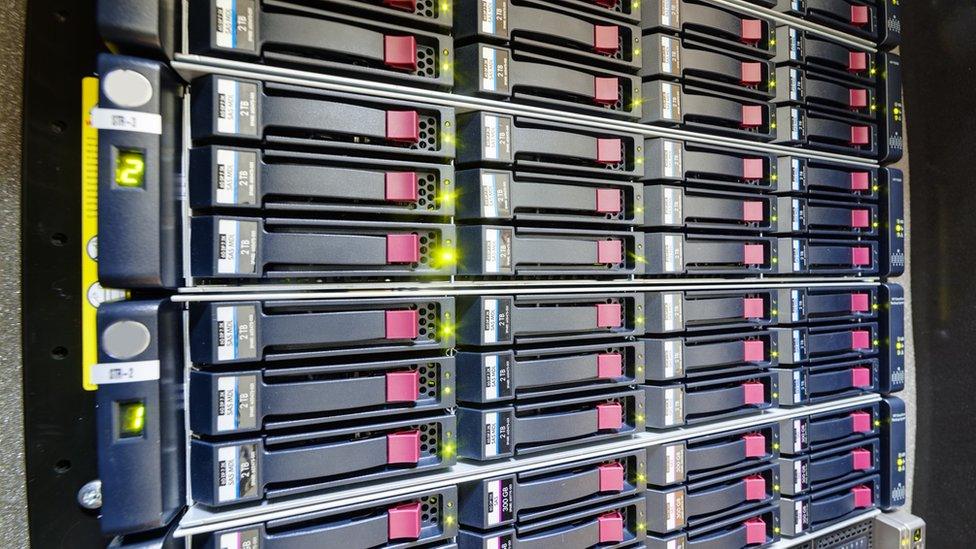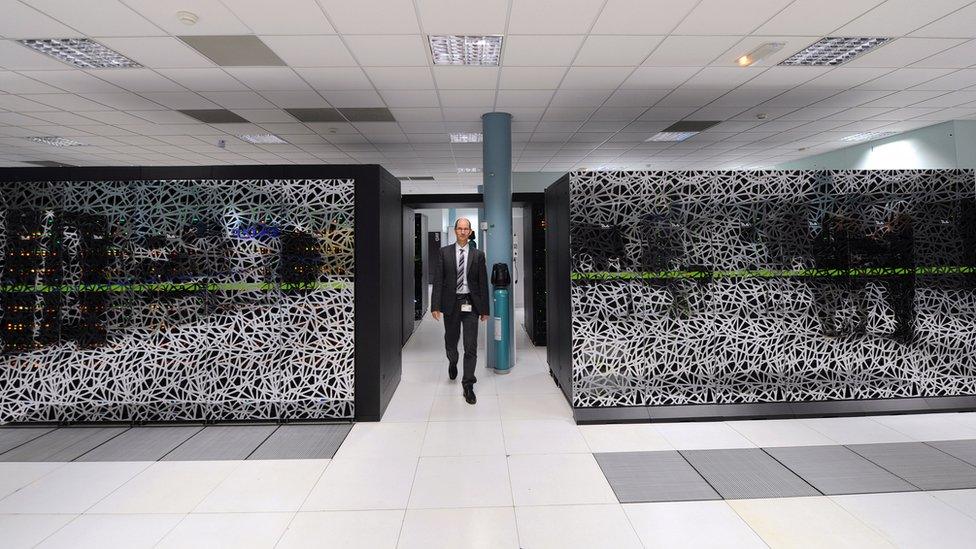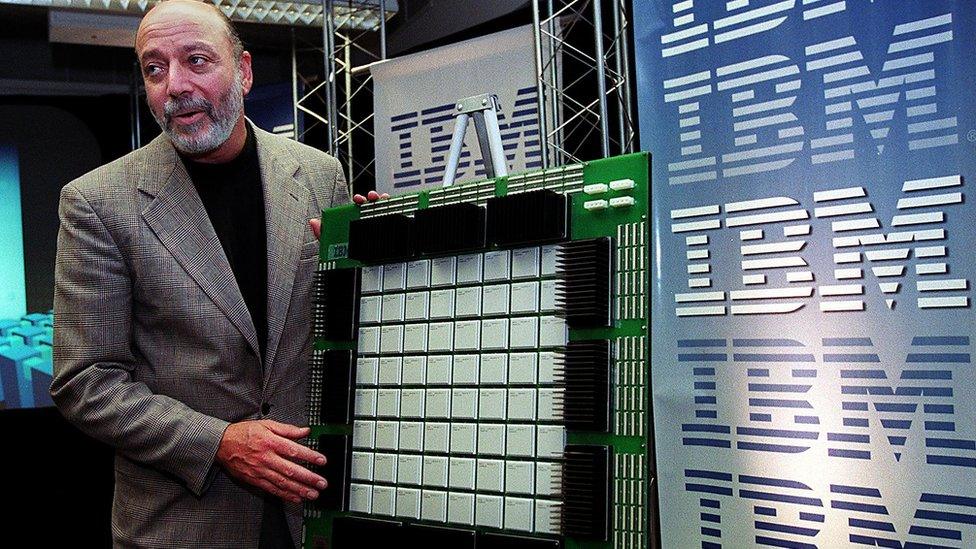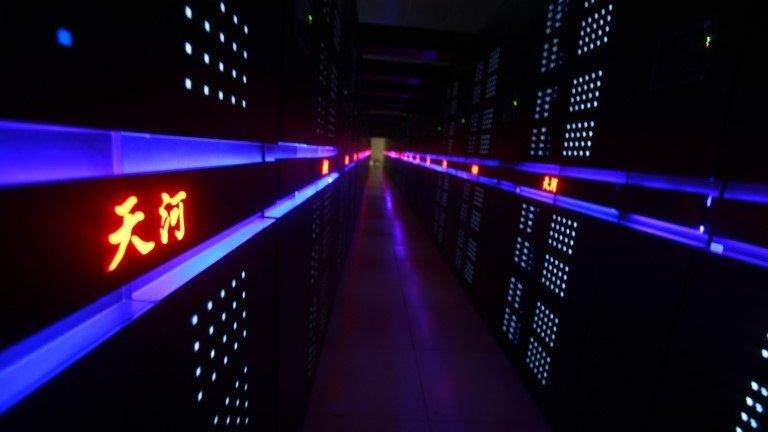China nearly triples number of supercomputers, report says
- Published

Supercomputers are used to perform complex simulations or applications to help scientific research in a wide range of industries
China has almost tripled its number of supercomputers, according to a reputable list of the world's most powerful machines.
The country has 109 high-performance computing systems on the biannual Top500 list, external of supercomputers, up 196% from 37 just six months ago.
The most powerful supercomputer, China's Tianhe-2, also retained the top spot for the sixth consecutive time.
In contrast, the US has seen the number of its supercomputers decline.
The US has 200 machines in the rankings, which is the largest number from a single country. But, that total number has fallen to the lowest level since computer scientists started compiling the list 22 years ago.
The power of the biggest supercomputer
Tianhe-2 was created by China's National University of Defense Technology and is being used at a supercomputer centre in the southern coastal city of Guangzhou.
It is capable of performing 33.86 quadrillion calculations in one second, which is almost twice the speed of the second most powerful supercomputer on the list - the US energy department's Titan.
Supercomputers are developed to perform complex simulations or applications to help scientific research in a wide range of industries such as predicting weather forecasts to making drug discoveries and DNA sequencing.

A supercomputer in France used by the country's national meteorological service
What lies behind China's supercomputer rise
Rajnish Arora, vice president of enterprise computing at market research firm IDC Asia Pacific, said China's rise does not necessarily mean the US is under-investing, but is more to do with the evolution of China's economy and businesses.
"When China started off appearing on the centre stage of the global economy in the 80s and 90s, it was predominately a manufacturing hub," he told the BBC.
"All the IP (intellectual property) or design work would happen in Europe or the US and the companies would just send manufacturing or production jobs to China.
"Now as these companies become bigger, they want to invest in technical research capabilities, so that they can create a lot more innovation and do basic design and engineering work."
The Chinese government and companies want to become the creators and not just producer of products that are being designed elsewhere, he added.
How valuable are supercomputers?

In 1999 IBM announced a five-year $100m development project to build a supercomputer that would simulate the building of proteins in the body. It was called Blue Gene and in 2004 was the fastest computer in the world
David Schibeci at the Pawsey Supercomputing Centre in Western Australia said that while the Top500 list is a good "general rule of thumb", it is not the final arbiter of the value of supercomputing services.
"I'd expect ranking systems to develop a focus on how much valuable research is produced by these systems and the outcomes that benefit the world," he said.
"Nations like China have a great opportunity to take a leading role in the HPC (high-performance computing) space but it's important that they focus on research support and upskilling of staff rather than just raw numbers for the Top 500."
China has the money to invest in supercomputers
Chinese companies are also taking a lead as manufacturers of supercomputers, according to the Top500. Chinese firm Sugon overtook IBM in the systems category with 49, while IBM ranks fourth with 45 systems. US tech giant Hewlett-Packard is at the top of the list with 156 supercomputer systems.
However, the rankings of the world's top five supercomputers has remained unchanged since June 2013. Mr Arora of IDC says this is in part to do with the significant investment required to build a supercomputer.

A supercomputer in Chile supports a powerful international astronomy facility that found new stars in distant galaxies in October
"Companies need to assess whether they really need that large a system to solve the problems they have," he said.
The availability of money is driving Chinese investment in the industry, added Andreas Wicenec, professor of data intensive research at the University of Western Australia.
"[It is] to show a high, almost disruptive impact in a field that was completely dominated by the US for decades," he said. "At this point in time, the impact of all these computers is not visible in research outputs in the fields I am used to monitoring more closely."
However, if China opened its vast computer resources to international collaborators, its impact in the research field could change very fast, he added.
- Published30 July 2015

- Published13 July 2015
